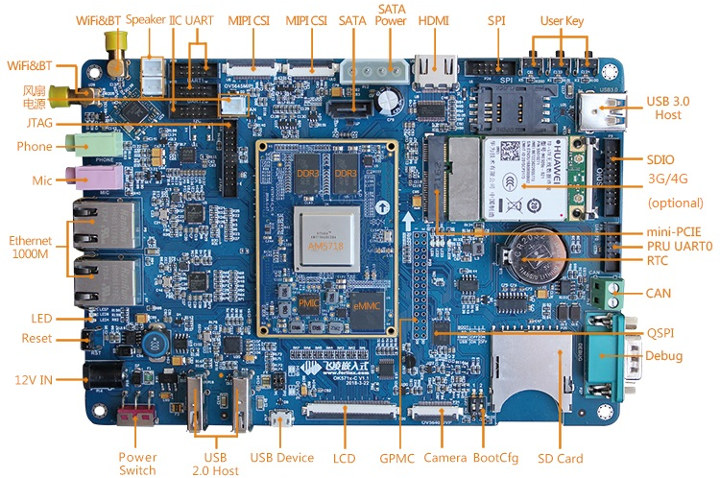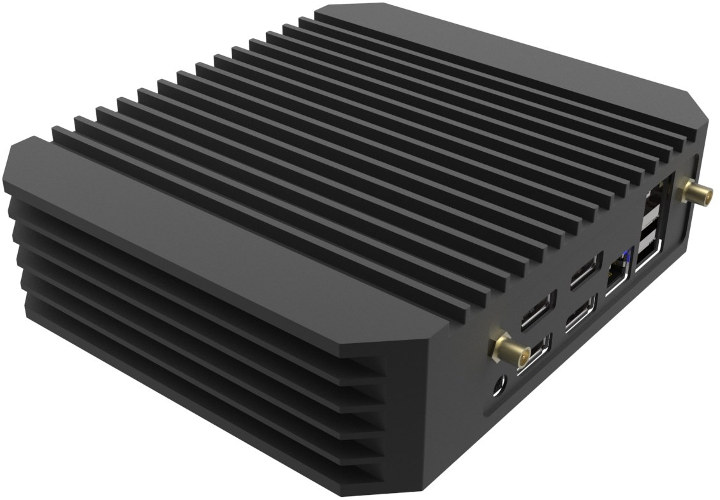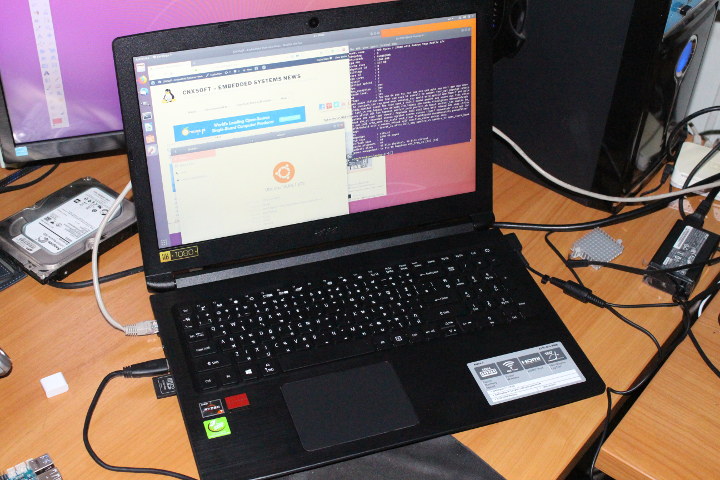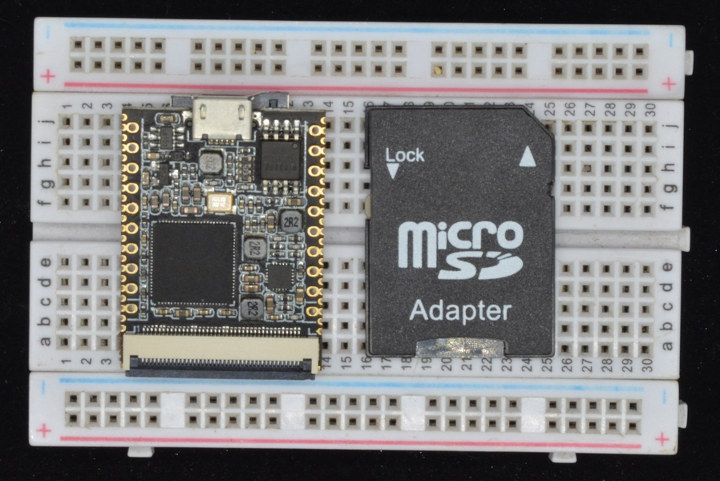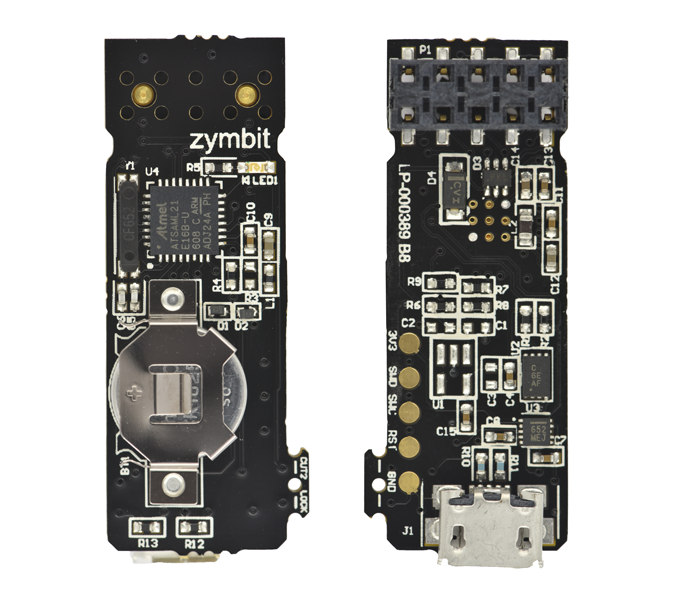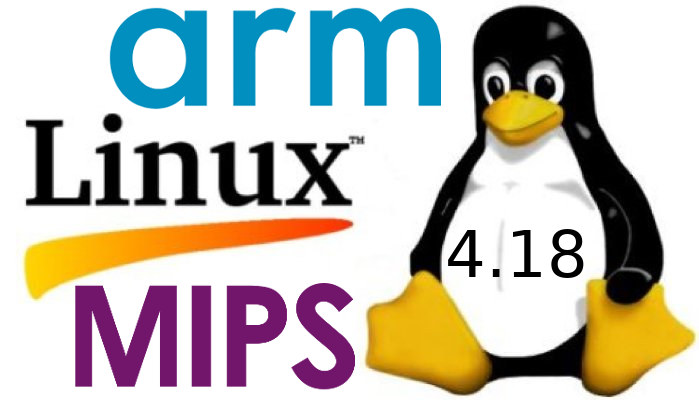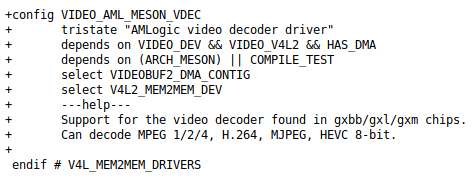Forlinx Embedded Technology (Forlinx) has just launched a new development board for indsutrial applications with audio and video processing requirements. OK5718-C development board features Texas Instruments AM5718 Sitara SoC with a single Arm Cortex-A15 core, two real-time Cortex-M4 cores, a dual PRU, and a TI C66x DSP core. OK5718-C development board consists of a carrier board and FET5718-C SoM with the following specifications: FET5718-C System-on-Module SoC – TI AM5718 Sitara Arm Cortex-A15 processor @ up to 1.5GHz, C66x DSP @ 750MHz, dual-core Arm Cortex-M4 @ 213MHz, dual core PRU @ 200MHz, PowerVR SGX544 3D GPU, Vivante GC320 2D GPU, IVA-HD video accelerator subsystem (H.264, MPEG4, MPEG2, VC1) System Memory – 1GB DDR3L Storage – 8GB eMMC flash Board-to-board connectors for interface with baseboard – 320–pin exposing USB 3.0, PCIe 3.0, HDMI 1.4a, LCD RGB, 10x UART, 1x QSPI, 2x CAN, 2x Gigabit Ethernet, etc… PMU – TI TPS659162RGZR Supply Voltage – […]
Tranquil PC’s AMD Ryzen Embedded Mini PC Supports Up to 4 Displays
AMD Ryzen Embedded V1000 processor family was introduced last February, but if you’d wanted to buy a Ryzen Embedded mini PC today, you’ struggle to do so at least for a retail model. One option is to get an UDOO Bolt V3/V8 development board together its metal case and assemble the mini PC yourself. The solution was launched on Kickstarter however, and will only start shipping in December 2018 if everything goes according to plans. If you’d rather get a Ryzen Embedded mini PC a little earlier, Tranquil PC’s Mini Multi display PC may be an option with a choice of three Ryzen embedded V1000 processors, a fanless design, and support for up to 4 independent displays. Transquil PC’s mini multi-display PC Basic/Advanced/Advanced+ specifications: SoC Basic – AMD Ryzen Embedded V1202B, 2C/4T @ 2.3 / 3.2GHz, TDP: 12W-25W Advanced – AMD Ryzen Embedded V1605B, 4C/8T @ 2.3 / 3.6GHz, TDP: […]
Acer Aspire 3 A315-41G (AMD Ryzen 7 2700U) Laptop – Installing Ubuntu 18.04 and “Hidden” M.2 SSD Socket
Everyday I’m using a tower PC running Ubuntu 18.04 to take care of this blog, but when I travel it’s obviously not so convenient, so a few years ago I bought an Acer Aspire E5-421G laptop powered by an AMD A4-6210 processor with 4GB RAM, 512GB HDD, and a 14″ display. I installed Ubuntu on the laptop and it works, but with 4GB RAM, it’s not always usable while multitasking. For example I can run Thunderbird and Firefox, but if I ever make a Skype call for example, the system becomes unusable, and I have to close one of the programs. Tasks like video editing are also quite slow on the machine. So since I’m going to travel in a few weeks, I decided I needed a new laptop. My requirements were 8GB RAM, SSD and HDD support, a 15″ display, the ability to run Ubuntu 18.04, and possibly a […]
LicheePi Nano is an SD Card Sized Linux Board Powered by Allwinner F1C100s ARM9 Processor
Before Allwinner launched their popular A10 Cortex A8 processor earlier this decade, the company had Allwinner F-series ARM9 processors found in E-ink readers, vehicle multimedia systems, audio products and so on. I would not expect a new board based on of those processors in 2018, but LicheePi Nano looks to be exactly that with an Allwinner F1C100s processor, a form factor roughly the size of an SD card, and support for RGB LED displays. LicheePi Nano board specifications: SoC- Allwinner F1C100s ARM926EJS processor clocked at up to 900MHz System Memory – 32MB DDR integrated into SoC Storage – Micro SD card, and optional 8M SPI flash (unpopulated in the photo above) Display I/F – 40-pin RGB LCD FPC connector supporting 272×480, 480×800, 1024×600 and other resolutions resistive and capacitive displays Video Decoding – H.264 / MPEG up to 720p I/Os via 2.54mm pitch through holes and 1.27mmm pitch castellated holes SDIO […]
Zymkey is a Hardware Security Module for Raspberry Pi Board
Microchip ATECC508A CryptoAuthentication chip appears to be a popular way to add hardware encryption support to development boards, as we’ve seen previously with 96Boards’ Secure96 mezzanine or LoRa explorer kit, and even just earlier today with Analoglamb Fish32 Seed ESP32 education board. Another solution is from Zymbit which provides Zymkey security modules for Raspberry Pi based on the ATECC508A CryptoAuthentication chip in different form factor: either a USB stick, an I2C module, or for further integration into your own design, an SMT component. Zymkey enables multifactor device ID & authentication, data encryption & signing, key storage & generation, and physical tamper detection. It also features a secure element root of trust, a real-time clock, and a true random number generator (TRNG). The company provides a simple Python or C/C++ API to make it easier to add Zymkey support to any Linux application, and the secure module can be integrated with […]
Linux 4.18 Release – Main Changes, Arm and MIPS Architecture
Linus Torvalds has just announced the release of Linux 4.18: One week late(r) and here we are – 4.18 is out there. It was a very calm week, and arguably I could just have released on schedule last week, but we did have some minor updates. Mostly networking, but some vfs race fixes (mentioned in the rc8 announment as “pending”) and a couple of driver fixes (scsi, networking, i2c). Some other minor random things (arm crypto fix, parisc memory ordering fix). Shortlog appended for the (few) details. Some of these I was almost ready to just delay to until the next merge window, but they were marked for stable anyway, so it would just have caused more backporting. The vfs fixes are for old races that are really hard to hit (which is obviously why they are old and weren’t noticed earlier). Some of them _have_ been seen in real […]
Amlogic Open Source Video Decoder Driver Coming Soon for S905, S905X and S912 Processors
Allwinner processors aren’t the only ones getting an open source hardware video decoding / encoding support in Linux, as Maxim Jourdan recently submitted a patchset to Amlogic Linux mailing list adding a video decoder driver to some Amlogic processors. The driver is written around the V4L2 M2M framework and currently supports MPEG 1/2/4, H.263, H.264, MJPEG, and (partially) HEVC 8-bit codecs. The driver has been tested with FFmpeg, GStreamer, and Kodi, and currently works on S905 (Meson GXBB), S905X/W/D (Meson GXL), and S912 (Meson GXM) processors. Those processors also support HEVC 10-bit, VP9, and VC1 codecs, and while those are implemented yet, they should be in the future. A separate commit adds support for “Overlay plane for video rendering” which support various YUV layouts and a non-alpha RGB32 layout, and will be useful for Kodi and LibreELEC ports. I came to learn about those two patchsets thanks to Neil Armtrong […]
How to Build an Orange Pi Zero LoRa Gateway
LoRa gateways tend to be fairly expensive, especially because of the radio part, but anything that may help lower the cost is probably welcomed. And one way to to do that is to use dirt cheap boards like Orange Pi Zero as Edzelf did, by combining the low cost Arm Linux board ($15 shipped) with Rak wireless RAK831 concentrator module kit ($143) via a custom cable, and a power supply board. All assembled into a metal case. RAK831 communicates with Orange Pi Zero over an SPI connection. While some other Orange Pi boards are suitable for the project, note that Orange Pi Zero Plus lacks a spare SPI interface, and can’t be used with this particular application. A fan was also added for cooling, a well as a USB serial debug board for debugging purpose, but it can be removed once the gateway is in the field. Software-wise, Edzelf installed […]


